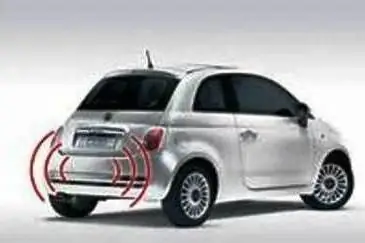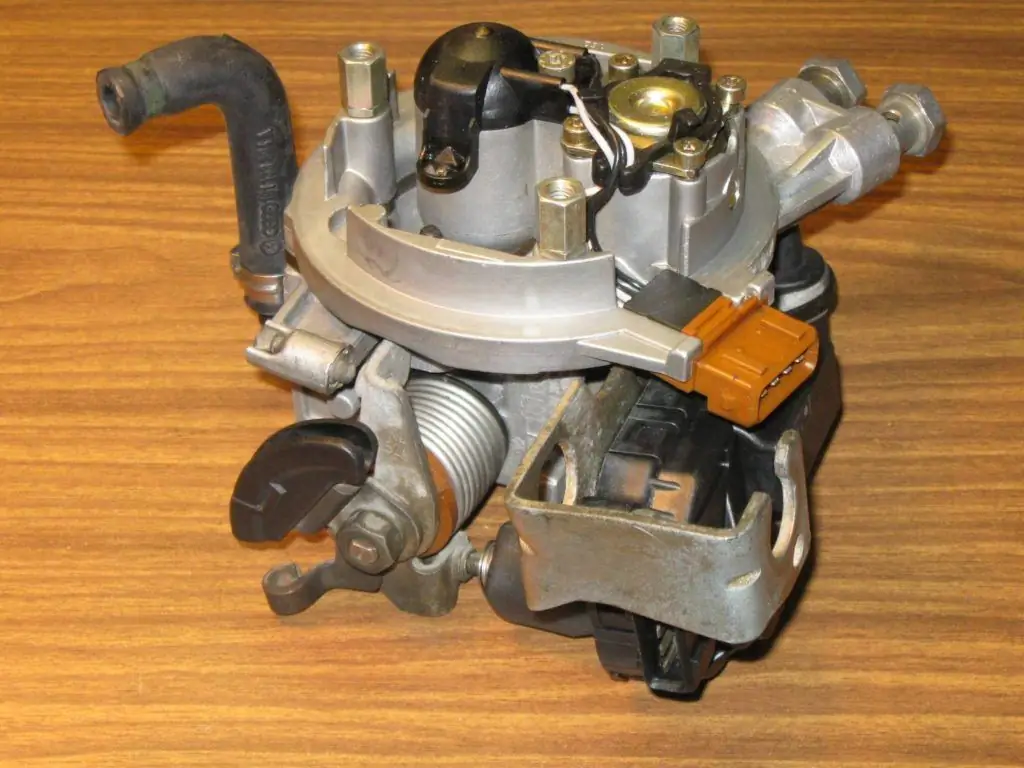2025 Author: Erin Ralphs | [email protected]. Last modified: 2025-01-22 21:14:09
Parking radar allows you to drive safely in tight spaces. With the help of sensors, the driver controls the distance of the car body from the nearest objects, reducing the risk of a collision. At the same time, the quality of the parking sensors depends on the configuration of its installation. There are different ways of integration and location of sensors, as well as channels for their interaction with the control unit. Manufacturers recommend installing parking sensors with maximum coverage of the space in front of the car, but this is not always advisable. When choosing a wiring diagram, it is important to consider many nuances, which will be discussed below.

Number of sensors and configuration of their placement
Usually, it is practiced to install sets of 4, 6 and 8 touch emitters. During operation, each sensor, by processing an ultrasonic pulse, allows you to estimate the distance to a third-party object. Sensing elements are placed at the back and front of the car, and their specific number on each side depends on what equipment the parking sensors provide - 6 sensors are usually divided into 2 and 4. 2 are installed in the front, and 4 in the back. The unevenness is due to the fact that the most dangerous "blind"zones fall precisely behind.
The maximum set for 8 sensors assumes a single layout - 4 sensors on each side. Experts do not recommend using 6 sensors on one side for the reason that they will provide too high sensitivity and a corresponding increase in the percentage of false positives. It is also recommended to install parking sensors in compliance with the distance from the ground and the distance between individual emitters. The height of the installation point from the roadway according to the instructions is 55-60 cm. The gaps between the sensors must be maintained in the range of 10-15 cm.

Punch-in installation
This is a classic mounting method that involves creating a hole in the body or bumper of the car. First you need to choose the optimal place for sensor integration. The mounting point should be located away from the protruding structural parts of the machine, including the trailer hitch, spare wheel fasteners, towing eyes, etc. Next, the cable is connected that will connect the sensor and the control unit. Wires should not be placed in close proximity to the exhaust system or power harnesses of local electrical equipment. It is desirable to physically install the parking sensors in the holes made with a complete drill. In this case, the optimal diameter will be provided without the risk of getting a narrowed or expanded niche. The sensor is installed in the prepared hole using rubber seals, which are also supplied with the kit.

Installation overhead method
This method has the advantage of eliminating the need for a sensor integration hole. It should be noted that the formation of the mounting niche is due to the need to fix the sensor element, as well as laying the communication channel through the wiring. It is easier to install parking sensors in an overhead way, since in this case it is enough to use a special adhesive solution included in the kit. Actually, according to the same principle, the electromagnetic tape of parking sensors is fixed - an analogue of ultrasonic sensors.
As for wiring, overhead models most often work wirelessly. Therefore, the question of how to properly install an overhead type parking sensor involves only correct marking, landing on glue and further configuration.
Mounting other functional components

The minimum equipment of the parking radar, in addition to sensors, also provides for the presence of a control unit and a display. The first one processes the signals from the sensors, and the second one presents the driver with specific data on the distance to objects. The controller unit can be installed in the luggage compartment, but in such a way that it is reliably protected from mechanical damage, vibration effects and moisture. Installation is carried out using a special metal frame into which the block itself is inserted. How to install parking sensors yourself? To do this, it is enough to arm yourself with a screwdriver, complete screws or bolts. In preparedtechnical holes, you need to screw the frame, and then install the controller with screws of a different format. The display is installed in a place visible to the driver - usually on the front panel. It can also be fixed with brackets or put on Velcro, which, however, is unreliable.
Connection diagram
Before connecting, disconnect the control unit from the power supply, and then visually determine the wiring channels. For example, parking sensors, 6 sensors of which are connected via the classic wired method, will provide for a two-way connection to the controller unit. That is, 4 lines will need to be connected to one side of the relay, and 2 to the other, directed towards the driver. On the front front side, the control unit relay usually has connectors for connecting an information wire, a power circuit, etc.

Wireless systems only require the connection of a controller box and in some cases a display for power supply. Power must be provided only from the battery and the on-board electrical network. Pulse sources are not suitable for such a connection scheme. You should also evaluate the compatibility with the voltage indicator. For example, Sho-Me parking sensors in standard versions can only be connected to sources with a voltage of 10-15 V.
General advice from installers
To ensure stable signal reception, it is recommended to initially observe the correct position of the sensors. Usually do-it-yourself installation is implemented without taking into account the orientation side of the sensitivesensor. Experts advise directing the wide part of the rim up. By the way, the premium parking sensors Sho-Me in the Y-2616 modification includes 8 large sensors with pronounced metal rings. When installing them, it is especially important to observe this rule. Another tip concerns wiring insulation. All supply cables must not only be protected, but also located in channels that exclude contact with a metal structure or other electrical equipment.
Conclusion

The technology of mounting a parking radar is much more complicated than installing a rear view camera. This is due to fierce competition between these driver assistants, while in practice the sensors are more effective. And yet, a well-thought-out layout of sensors and communication lines helps to install parking sensors without any problems. The price of such services in specialized workshops can vary from 5 to 10 thousand rubles. depending on the complexity of the work. For an ordinary motorist, the main problem of this operation will be the laying of cable infrastructure. Working with the onboard electrical network in itself imposes a high responsibility. However, you can choose an alternative method of wireless editing.
Recommended:
Starter VAZ-2105: problems and solutions, replacement and repair rules, expert advice

VAZ-2105 is still popular with Russian drivers. It is distinguished by ease of operation and low cost of spare parts. However, if the car owner wants the car to work without problems, he must regularly check it for various faults
Detailed instructions for installing parking sensors with your own hands

Modern drivers have an excellent opportunity to use various electronic assistants that make driving easier. To park the car safely for yourself and for others, there are parking sensors. Installing such a device is a simple process, and with the help of detailed instructions, everyone can handle this matter with their own hands in the garage
Front and rear parking sensors. Parktronics for 8 sensors

Even for experienced drivers, who perfectly feel the dimensions of the car, front and rear parking sensors can greatly facilitate the process of parking in confined spaces. This is especially true for large cities where there is a constant shortage of places where you could leave your car
To make parking easier, buy parking sensors

Parking is often a problem for motorists, and it's not just about experience - it's just that our cities aren't geared up for this amount of traffic. Even if you are lucky, and a place for a car was found not far from the destination, then squeezing in there and not scratching your own or someone else's vehicle is sometimes very problematic. To facilitate maneuvers during parking, parking sensors have been developed
Setting up a single injection: step by step instructions, expert advice

On our roads you can meet cars with carburetors, cars with injection engines are gaining more and more popularity. But we will consider a “transitional” option between them - a single injection system, which is less and less common, but sometimes occurs. Let's analyze the device, the principle of operation, the features of setting up a single injection

